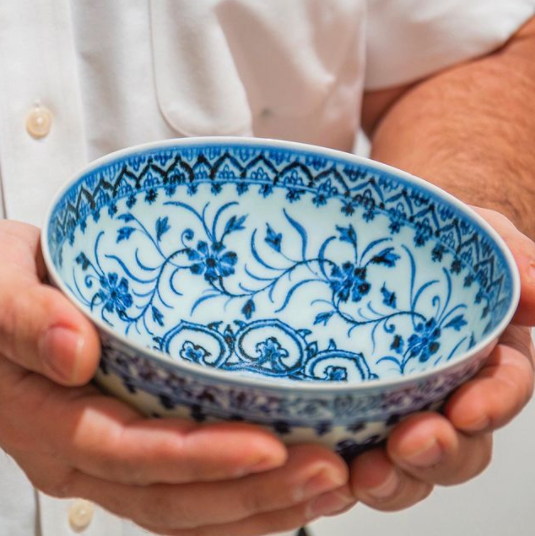A small porcelain bowl sold for $35 has turned out to be a valuable, 15th-century Chinese artifact worth up to half a million dollars.
An unidentified Connecticut man purchased the bowl from a yard sale near New Haven last year, and then emailed auction company Sotheby's pictures for an evaluation, according to The Associated Press. Appraisers found out it dates back to the early 1400's Ming Dynasty and is valued at between $300,000 and $500,000.
The bowl, which Sotheby's calls "exceptional and unique," will be open to the highest bidder as part of the Important Chinese Art auction in New York later this month.
Of the six other bowls of this kind believed to exist, Sotheby's senior vice president Angela McAteer said that most are in museums and none are in the U.S. Two are in the National Palace Museum in Taipei, Taiwan, two are in museums in London, and one is in the National Museum of Iran in Tehran, according to Sotheby's.
How the bowl ended up at the Connecticut yard sail remains a mystery. McAteer said it was likely that it was handed on through generations of the same family who did not know how rare it was.
The cobalt blue-painted bowl is tiny 6 inches in diameter-and shaped like a lotus bud or chicken heart, as written on the auction website. It is decorated with "lotus blossoms, peony, chrysanthemum, and pomegranate flowers," with a medallion at the bottom and a band of lotus scrolls along the rim.
McAteer said the bowl had "all the characteristics and hallmarks" of the early Ming period, citing its texture, silk gloss, and recognizable color and design.
Sotheby's experts dated the bowl to the period of the Yongle Emperor, who reigned from 1403 to 1424, and introduced a distinct new type of porcelain work that was immediately recognizable, never exceeded, and described the art even in the eighteenth century.
"In every respect, this delicate bowl is a quintessential Yongle product, made for the court, showing the striking combination of superb material and painting with a slightly exotic design that characterizes imperial porcelain of this period," reads the catalog note.
And, even after all these years, Sotheby's confirms the artifact is in still great shape. It mentions only a shallow chip and a slight warping on the bottom, as well as some light wear and small imperfections that are "all consistent with age and type."






